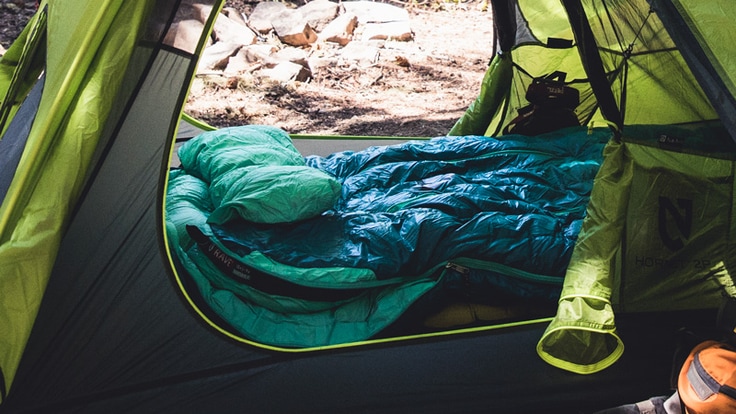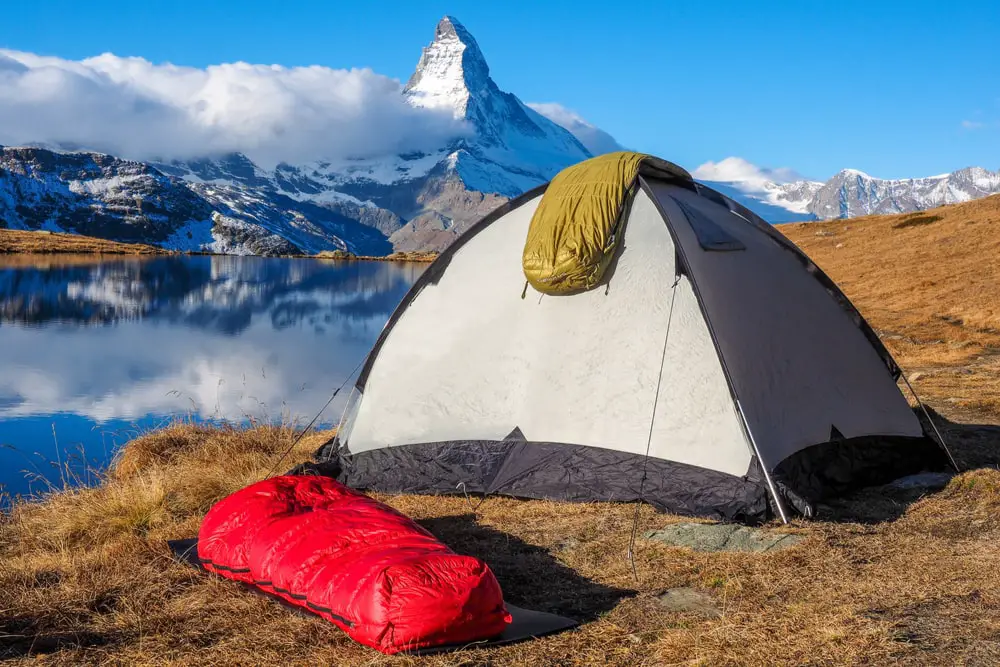Choosing the best sleeping bag for your camping trip involves considering factors such as temperature rating, size, material, and weight. For a comfortable and warm night’s sleep in the great outdoors, it’s important to select a sleeping bag that fits your needs and budget.
When planning a camping trip, finding the right sleeping gear is crucial for a good night’s sleep and a successful trip. One of the most important pieces of gear is the sleeping bag. As there are various types of sleeping bags in the market, picking the right one can be a daunting task.
However, by considering factors like temperature rating, size, material, and weight, choosing the perfect sleeping bag becomes easier. In this article, we will explore the factors to consider when selecting a sleeping bag for your next camping trip and guide you through the process step-by-step. So, read on to find out how to choose the best sleeping bag for your next camping trip.

Credit: www.rei.com
Contents
- 1 Understanding The Basics Of Sleeping Bags
- 2 Considering Your Sleeping Environment
- 3 Finding The Right Size And Fit
- 4 Features That Matter
- 5 Choosing A Budget And Quality
- 6 Frequently Asked Questions On How To Choose The Best Sleeping Bag For Your Next Camping Trip
- 6.1 What Temperature Rating Should I Choose For My Sleeping Bag?
- 6.2 What Are The Different Shapes Of Sleeping Bags And Their Benefits?
- 6.3 What Should I Consider When Choosing The Insulation Type For My Sleeping Bag?
- 6.4 Do I Need A Sleeping Bag Liner?
- 6.5 How Important Is The Weight Of The Sleeping Bag?
Understanding The Basics Of Sleeping Bags
Sleeping bags are an essential gear for any outdoor adventurer. When it comes to choosing the best one for your needs, understanding the basics is crucial. There are three different types of sleeping bags available: mummy, rectangular and semi-rectangular. Each has a specific shape to offer different levels of comfort and insulation.
The insulation and fill power also come into play. There are down, synthetic and wool options available, with varying degrees of insulation and compressibility. Finally, make sure you pay attention to the temperature rating, which typically includes the comfort, limit and extreme temperatures.
By understanding these basic factors, you’ll be equipped to choose the perfect sleeping bag for your next outdoor adventure.
Considering Your Sleeping Environment
When you’re considering your sleeping environment, you need to factor in the weather conditions. Check temperature, humidity, and rainfall to determine what type of sleeping bag will work best for your situation. Altitude and location are also important to consider, as they can affect the temperature and humidity of your surroundings.
Additionally, you need to think about the type of shelter you’ll be using, whether it’s a tent or other kind of structure. Look at factors like size, ventilation, and material to make sure your sleeping bag will be suitable. By paying attention to these details, you’ll be able to choose the best sleeping bag for your needs and enjoy a comfortable night’s sleep no matter where your outdoor adventures take you.
Finding The Right Size And Fit
Choosing the right size and fit is crucial when buying a sleeping bag. The length, width, shoulder, hip and foot size should be measured to ensure the best fit. Room for movement and comfort should also be taken into consideration.
The shape and style of the sleeping bag – mummy, rectangular or semi-rectangular – will also affect its size and fit. An ill-fitting sleeping bag can lead to discomfort and inadequate insulation, so it’s important to take these factors into account when making a purchase.
Features That Matter
Choosing the best sleeping bag for your needs can be overwhelming given the multitude of options available. However, certain features of sleeping bags are critical to prioritize when making a purchase. The hood and collar of a sleeping bag provide warmth and insulation for your head and neck, which are essential to maintaining body heat.
Similarly, zippers and pockets ensure convenience and ease of use, allowing you to access your belongings without leaving the warmth of your bag. Draft tubes and baffles are designed to prevent heat loss and cold spots, which can be a significant problem in cold weather.
Taking these features into account will help you choose the best sleeping bag for your next outdoor adventure.
Choosing A Budget And Quality
When it comes to choosing the best sleeping bag, budget and quality are important factors to consider. The price range of sleeping bags can vary from budget-friendly to mid-range and high-end options. Consider the lifespan and care instructions of the sleeping bag to ensure durability and maintenance.
Additionally, brand reputation and customer reviews can provide valuable insights into the quality and performance of sleeping bags. To make the best decision, consider all of these factors when choosing a sleeping bag that fits both your budget and quality expectations.
Frequently Asked Questions On How To Choose The Best Sleeping Bag For Your Next Camping Trip
What Temperature Rating Should I Choose For My Sleeping Bag?
Choose a sleeping bag with a temperature rating that matches the lowest temperature expected on your camping trip. If you are a cold sleeper, consider choosing a sleeping bag with a slightly lower temperature rating.
What Are The Different Shapes Of Sleeping Bags And Their Benefits?
There are three common sleeping bag shapes: rectangular, mummy, and semi-rectangular. Rectangular bags offer more room for movement while mummy bags are more efficient at retaining heat. Semi-rectangular bags offer a balance between the two.
What Should I Consider When Choosing The Insulation Type For My Sleeping Bag?
Insulation type can impact weight, compressibility, and warmth. Down insulation is light and highly compressible, but loses insulation power when wet. Synthetic insulation is heavier and less compressible, but can still insulate when wet.
Do I Need A Sleeping Bag Liner?
A sleeping bag liner can improve the cleanliness and lifespan of your sleeping bag. Liners can also provide extra warmth and can be used on their own for warm weather camping.
How Important Is The Weight Of The Sleeping Bag?
The weight of the sleeping bag is important for backpackers and hikers who need to consider pack weight. Lighter sleeping bags are often more expensive and may have lower temperature ratings, so consider your priorities when choosing a sleeping bag.

